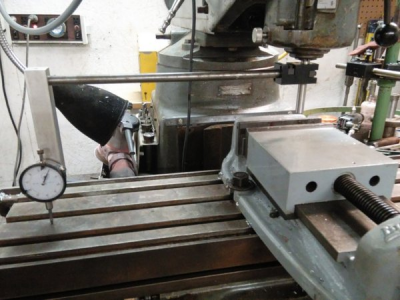- Joined
- Dec 18, 2019
- Messages
- 7,429
Spent a little bit of time cruising HM and the www looking at various means to tram a mill. As I have started to make more things, I'm seeing the small errors and imperfections that I'd like to minimize. So I'd like to tram my PM25 to make it better than it currently is. Not interested in buying a gizmo at this time. But, I would like to make a single indicator tool. It's relatively simple, which I like, and I only have a single indicator. Besides, I've blown the tooling budget for a while, so I need to make something from the stock at hand.
Have a couple of questions. Is it better to use a dial indicator or a DTI? (For indicators, I have a Federal DI 0.0001", or an Enco DTI 0.0005".) How does one account for the differing lengths of the X (23") & Y (7") axes?
On one HM thread, I saw a tramming tool that had rod in the spindle. On the rod there was a block. A second rod that was perpendicular to the first was attached to the block. Finally, there was a second block which attached to the horizontal rod. The dial indicator was attached to the second block. This tool had a way to adjust it's length. What I don't understand was how the rods were captured. I understand milling out a hole and making a slit and clamping across the slit to captivate the rod. What I don't understand is how the dark block below works. Can someone explain it? I've been pondering this a while and it's not coming to me.

Thanks for any tips and ideas.
Have a couple of questions. Is it better to use a dial indicator or a DTI? (For indicators, I have a Federal DI 0.0001", or an Enco DTI 0.0005".) How does one account for the differing lengths of the X (23") & Y (7") axes?
On one HM thread, I saw a tramming tool that had rod in the spindle. On the rod there was a block. A second rod that was perpendicular to the first was attached to the block. Finally, there was a second block which attached to the horizontal rod. The dial indicator was attached to the second block. This tool had a way to adjust it's length. What I don't understand was how the rods were captured. I understand milling out a hole and making a slit and clamping across the slit to captivate the rod. What I don't understand is how the dark block below works. Can someone explain it? I've been pondering this a while and it's not coming to me.

Thanks for any tips and ideas.
